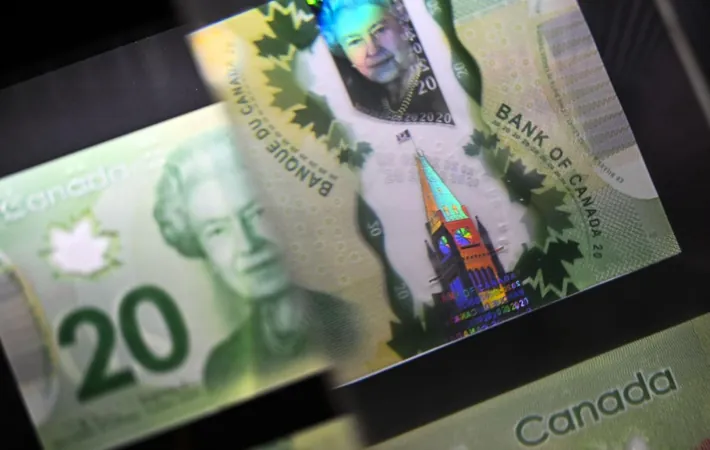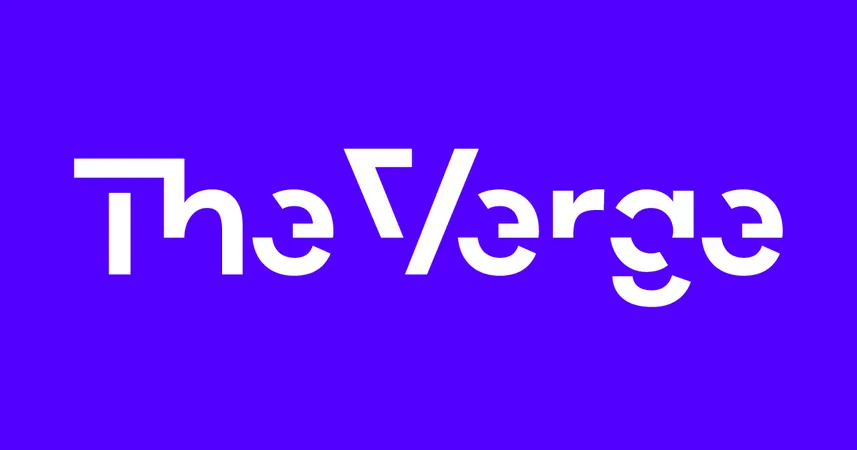
Why Experts Warn the Canadian Dollar Will Struggle Until 2025
2024-11-18
Author: Benjamin
The Canadian dollar, affectionately known as the loonie, is expected to remain under pressure through the end of this year, with potential for recovery not anticipated until 2025, according to financial experts.
Recently, the loonie tumbled to a four-year low, trading at 71.18 cents US. This decline marks a significant downturn since the onset of the COVID-19 pandemic and reflects a nearly four percent drop from its value just a month ago.
Katherine Judge, a senior economist at CIBC Capital Markets, expressed concern over the loonie's trajectory. She believes the currency will stabilize at current levels for the rest of 2024. "We haven't seen these levels in a long time. I think we've certainly breached a level that is worrisome," said Judge. She highlighted the uncertainty that looms over the Canadian economy in the coming months.
The loonie’s decline coincides with the soaring value of the US dollar, which has gained traction following the re-election of former President Donald Trump. Trump's pledge to impose sweeping tariffs on all US imports could further strain Canada’s economy, as approximately 75% of Canadian exports are sent to the US. Judge indicated that if tariffs are implemented, the Canadian dollar might weaken even more.
However, there’s a glimmer of hope. Should negotiations yield a resolution that avoids heavy tariffs, Judge anticipates a potential rebound for the loonie in 2025. "It's a near-term weakness with some recovery next year — which is really our base case," she noted.
Another critical factor contributing to the loonie's performance is the diverging interest rates in Canada and the US. Canada has struggled in recent months, prompting the Bank of Canada to cut interest rates more aggressively than the US Federal Reserve in a bid to avert a recession. As a result, the interest rate gap between the two countries could widen further depending on Trump's economic policies.
Judge raised concerns about the broader implications of tariffs, stating, "If the Canadian economy gets hit hard and our exports suffer, the Bank of Canada may have to consider further rate cuts to support our domestic economy."
The impact of a weak loonie is twofold: it can benefit Canadian exporters targeting the US market, but it also increases costs for importers and makes travel more expensive for Canadians. Although there are always upsides and downsides to currency fluctuations, Judge warns that the balance has tilted too far toward disadvantage for the Canadian economy at this juncture.
"The goal is to have a Canadian dollar that is low enough to attract investment and competitive wages without spiraling into inflation due to import costs," Judge concluded.
As the economic landscape evolves over the next year, many will be watching closely to see how currency swings impact the everyday lives of Canadians and the larger economic framework. The Canadian economy may face turbulent waters ahead, but recovery—or at least stabilization—may lie on the horizon as 2025 approaches.









 Brasil (PT)
Brasil (PT)
 Canada (EN)
Canada (EN)
 Chile (ES)
Chile (ES)
 España (ES)
España (ES)
 France (FR)
France (FR)
 Hong Kong (EN)
Hong Kong (EN)
 Italia (IT)
Italia (IT)
 日本 (JA)
日本 (JA)
 Magyarország (HU)
Magyarország (HU)
 Norge (NO)
Norge (NO)
 Polska (PL)
Polska (PL)
 Schweiz (DE)
Schweiz (DE)
 Singapore (EN)
Singapore (EN)
 Sverige (SV)
Sverige (SV)
 Suomi (FI)
Suomi (FI)
 Türkiye (TR)
Türkiye (TR)